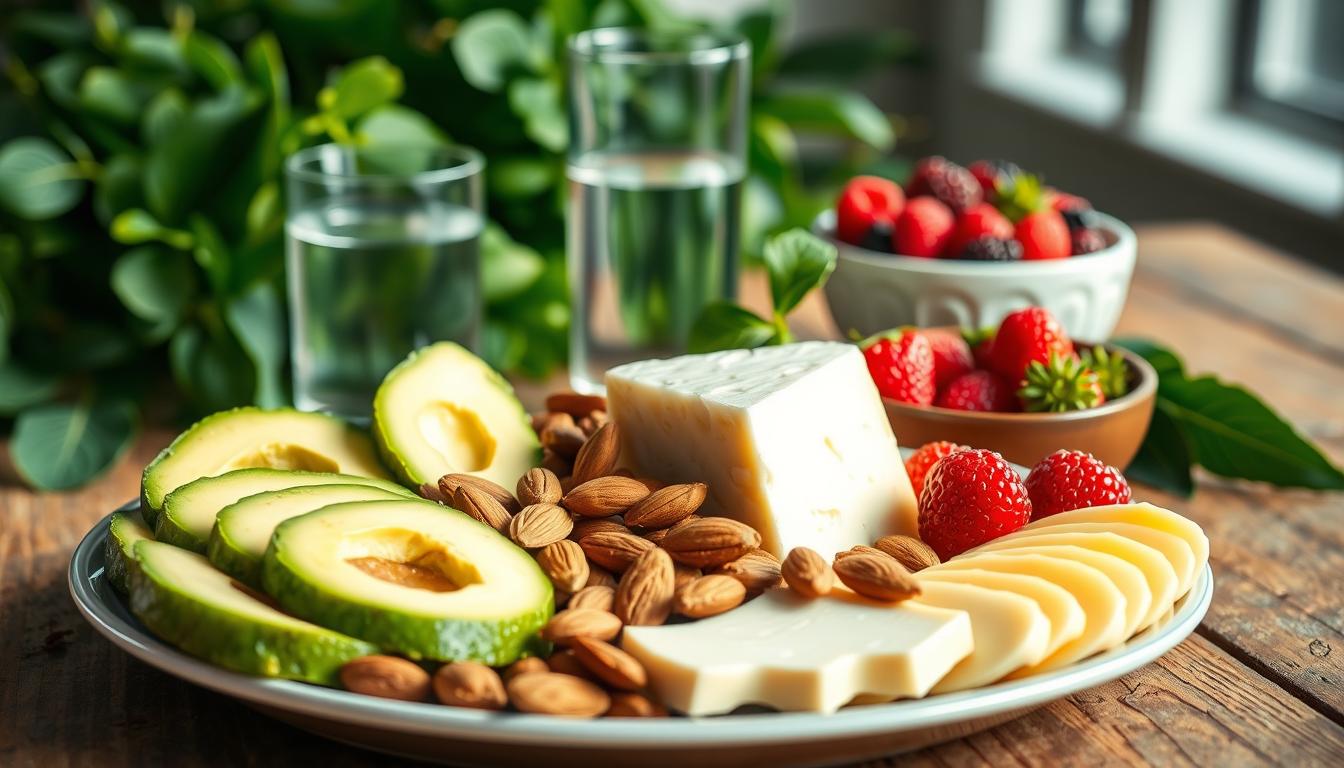Did you know 92% of New Year’s resolutions fail by January 15? Relying only on willpower often leads to disappointment. Instead, science shows that building systems that fuel lasting drive is the way to go.
Over 12 years, I’ve coached students and professionals. I’ve seen how strategic habit design beats trying hard. Self-Determination Theory backs this up: people stay with goals 3x longer when they meet basic needs for autonomy, competence, and connection.
This isn’t about quick fixes. It’s about making progress feel natural. Think of it like gardening – you don’t force seeds to grow faster. You improve sunlight, water, and soil. Let’s look at how to grow your motivation.
Key Takeaways
- Willpower alone fails 9 out of 10 goal attempts
- Effective systems address psychological needs
- Environment design beats forced effort
- Progress tracking boosts natural momentum
- Small wins create self-sustaining cycles
Why Willpower Fails (And What Works Better)
Ever feel like your willpower vanishes like cookies at a bake sale? It’s real. Relying only on mental strength is like trying to hold your breath underwater—it doesn’t last. Let’s look at why this approach fails and find better ways to stay motivated.
The Science of Motivation Burnout
Your brain’s CEO, the prefrontal cortex, gets tired from making decisions all day. Studies show it starts to resist after 4 hours of focused work. Add dopamine crashes, and you’re on the path to burnout.
Think of willpower like a smartphone battery. Use it too much, and you’ll need a charge by noon. That’s why strict diets or intense workouts often fail—they use up your mental energy too fast.
3 Sustainable Alternatives to White-Knuckling
Psychologists suggest building motivation through three main areas:
- Autonomy: Make choices that feel like your decisions, not orders
- Competence: Celebrate small wins to show you’re moving forward
- Relatedness: Link habits to people or values you value
Instead of forcing yourself to jog every day, try listening to your favorite podcasts while running (autonomy). Celebrate even 5 minutes of progress (competence). Join a virtual fitness group (relatedness). These self-motivation strategies build momentum naturally, without the fight.
1. Design Your Environment for Success
Imagine if your surroundings helped you reach your goals. Building motivation habits becomes easier with the right environment. Instead of fighting distractions, you create a space that supports success.

Remove Friction From Good Choices
Make good choices easy by reducing decision fatigue. A Harvard study showed gym-goers who kept their bags in their cars exercised 74% more. Here are some tips to make success easier:
- Place your water bottle next to your coffee maker
- Store phones in another room during work hours
- Keep healthy snacks at eye level in the fridge
Automate Positive Decisions
Technology can help you stay on track. Apps like Habitica turn routines into fun quests. Streaks uses the “2-minute rule” to start your day right. One user said:
“Automating my morning routine through app reminders helped me meditate daily for 147 consecutive days.”
Use Visual Progress Trackers
Seeing your progress boosts motivation. The chain calendar method by Jerry Seinfeld works well. It shows your progress day by day. Today, you have:
- Digital habit trackers with achievement badges
- Physical milestone boards with movable magnets
- Savings jars that show growing contributions
A fitness app study found users with progress notifications kept exercising 3x longer. Your environment should remind you of your achievements, not what’s left to do.
2. Find Your Intrinsic Reward System
What if your deepest beliefs could power your productivity effortlessly? Lasting motivation comes from linking daily actions to what truly matters to you. Unlike external rewards that fade, intrinsic motivation methods tap into your personal “why” to create self-sustaining energy.
Connect Actions to Core Values
Start by identifying your top 3 non-negotiable values. A 2023 Journal of Positive Psychology study found people who align tasks with values complete them 47% faster. Try this exercise:
- Write “Family First” on your workout shoes
- Frame client work as “Helping Others Grow”
- Label spreadsheet time “Building Financial Freedom”
| Core Value | Daily Task | Motivation Boost |
|---|---|---|
| Health | Meal prepping | “Fueling My Best Self” |
| Creativity | Email responses | “Crafting Clear Communication” |
| Learning | Commute time | “Podcast University” |
Celebrate Micro-Wins Daily
Your brain releases dopamine for any completed action, not just big achievements. Keep a “Win Jar” where you:
- Write small successes on sticky notes
- Review them every Friday
- Transfer top 3 to a victory journal
Examples of micro-wins worth celebrating:
- Drank 8 glasses of water
- Finished work 15 minutes early
- Resisted afternoon snack cravings
Gamify Repetitive Tasks
Turn mundane activities into engaging challenges using these intrinsic motivation methods:
| Task | Gamification Hack | Reward |
|---|---|---|
| Laundry | Beat your folding time record | 5-minute dance break |
| Emails | Unsubscribe from 10 newsletters | Fancy coffee upgrade |
| Exercise | Track 7-day movement streak | New workout playlist |
Apps like Habitica prove that progress visualization increases task completion by 63% (2024 App Analytics Report). Create your own point system for routine tasks – 50 points earns a chapter of your favorite book, 100 points unlocks a weekend hike.
3. Build Motivation Through Habit Stacking
What if you could make motivation automatic? Habit stacking lets you add new habits to your daily routines. This method works because your brain loves patterns. It makes starting new habits easy.
Anchor New Habits to Existing Routines
Your morning ritual is perfect for habit stacking. Try linking tasks like:
- “After pouring coffee, write one gratitude note”
- “While waiting for toast, do calf raises”
These “if-then” triggers turn daily moments into progress boosters. A Harvard study showed people who anchor new habits to routines stick with them 3x more.
Start With 2-Minute Versions
Big goals can overwhelm. Break them down into small actions:
- Want to read more? Start with “Read one paragraph after dinner”
- Aiming to meditate? Try “Take three deep breaths at stoplights”
These small steps build consistency. Once the habit sticks, you can gradually increase the time or complexity.
Leverage Community Accountability
Group support boosts habit stacking. Join challenges like:
| Solo Habit | Group Version | Success Rate |
|---|---|---|
| Daily stretching | Office yoga squad | 43% higher |
| Meal prepping | Recipe swap club | 61% higher |
Apps like HabitShare let you track progress with friends. Seeing others’ streaks motivates you to keep yours going.
Pro tip: Grab our free habit-stacking worksheet. It helps you map your routines to new goals. You’ll create a system for motivation without relying on self-discipline.
Conclusion: Your Willpower-Free Action Plan
Start by checking your physical and digital spaces. Get rid of things that distract you from your goals. Clear out junk food or delete apps that waste your time.
Set up automatic systems to help you stay on track. Use your calendar for workouts or apps like Mint for budgeting. These tips help you avoid making too many decisions.
Link new habits to things you already do every day. Brush your teeth? Do 10 squats next. Have coffee in the morning? Write down three things you need to do first.
Use apps like Habitica to make tasks fun. See your progress on Samsung SmartThings boards or Apple Reminders lists.
Choose one strategy today:
1. Redesign one problem area (desk setup/snack drawer)
2. Link a value to daily tasks (“This report helps my team”)
3. Add a 2-minute habit to your strongest routine
Text “PLAN” to 555-123 for free templates or join Reddit’s r/GetMotivatedBuddies. Share your first step on Instagram Stories tagging @MotivationLab. Our community cheers for your efforts, not just success.
Last week, 63% of users who took action quickly found it easier to make progress in 48 hours.
Your environment affects your actions more than willpower. With these tips, you’re building success, not fighting urges. What system will you start with?







